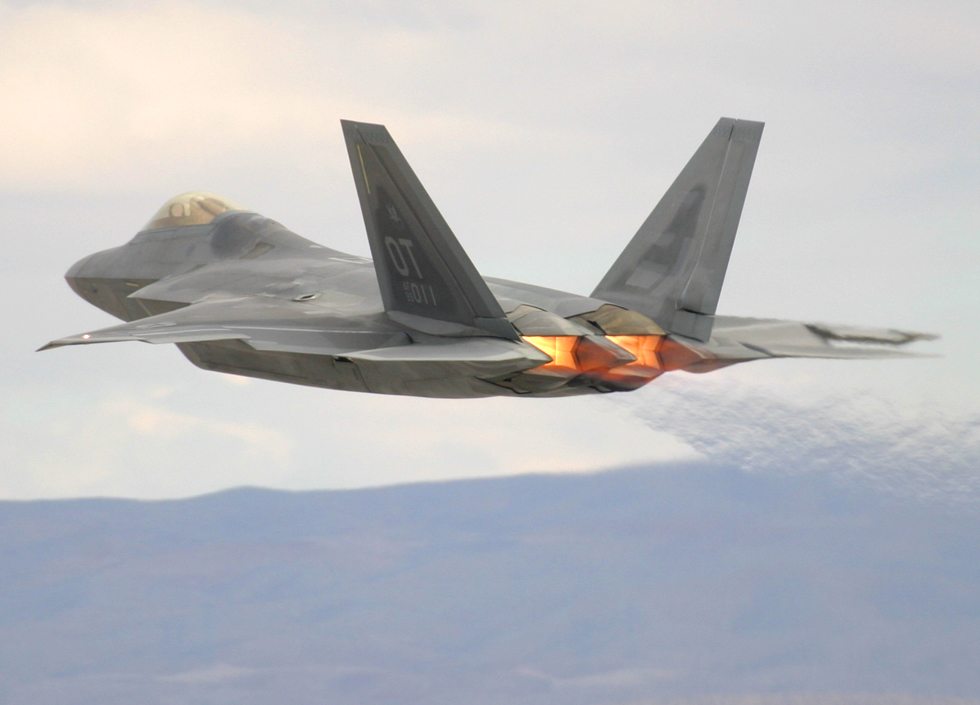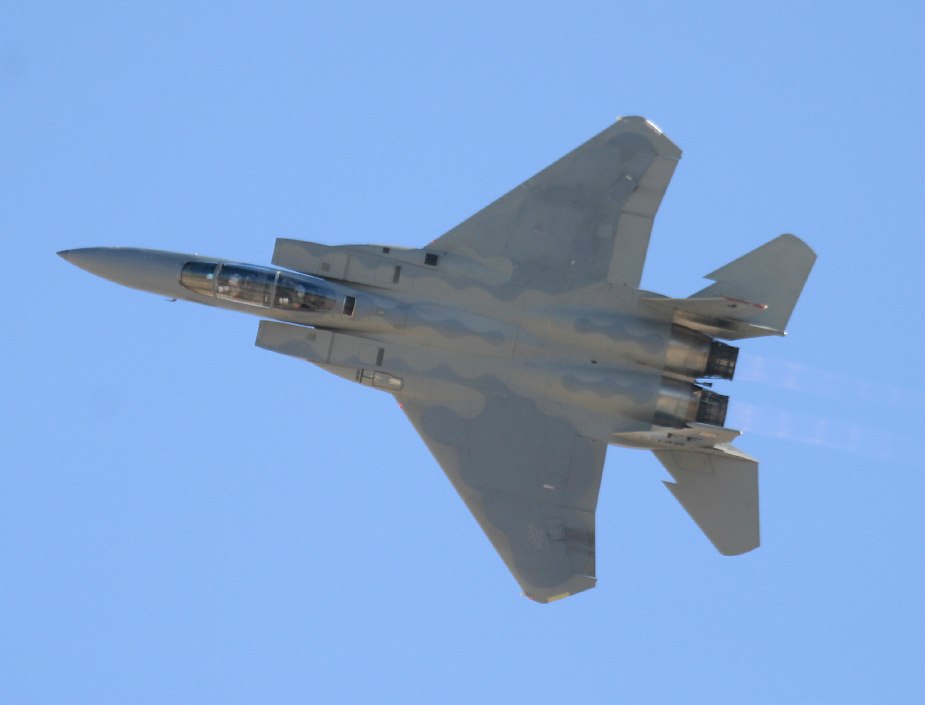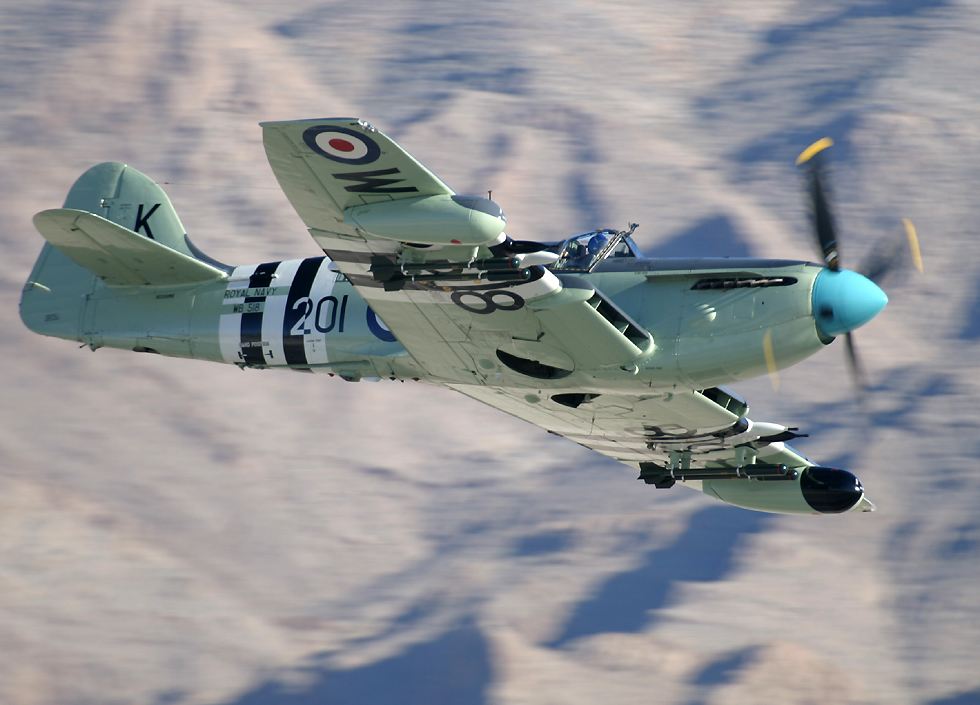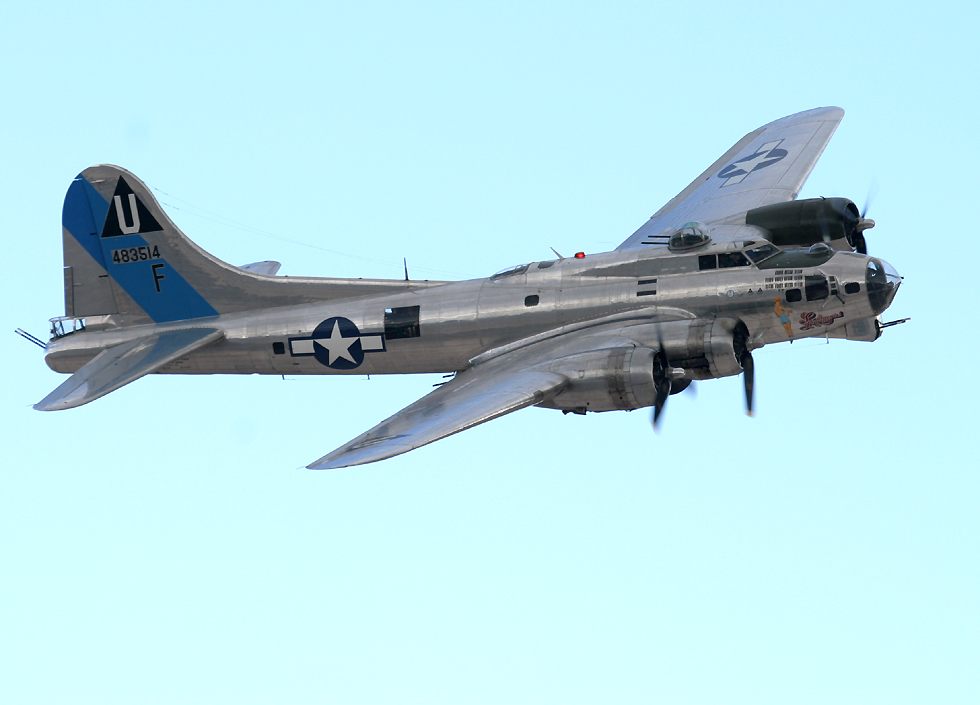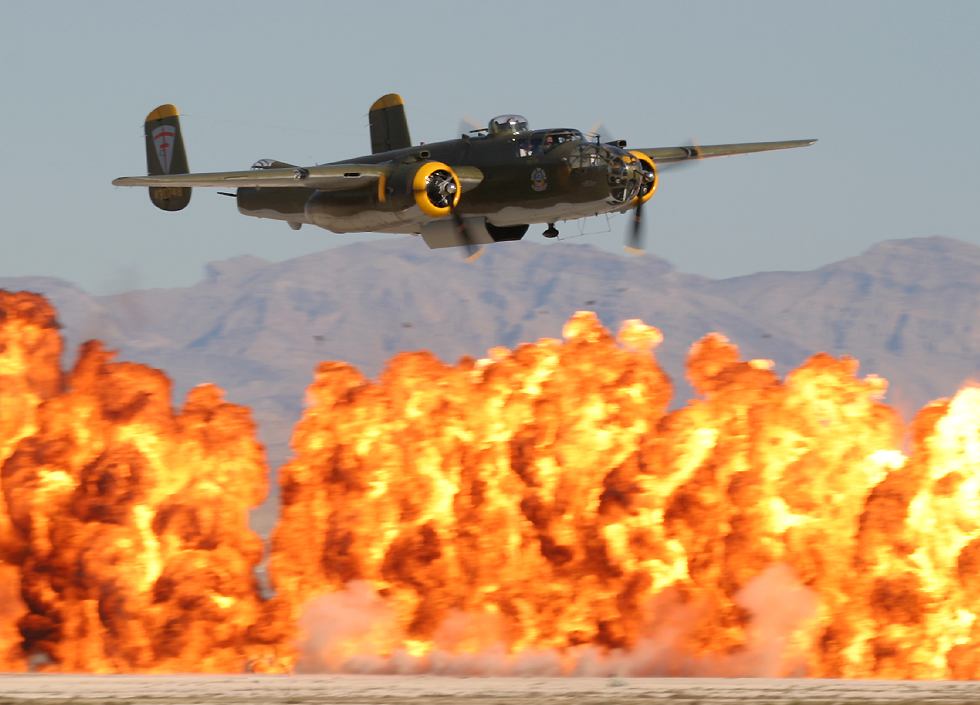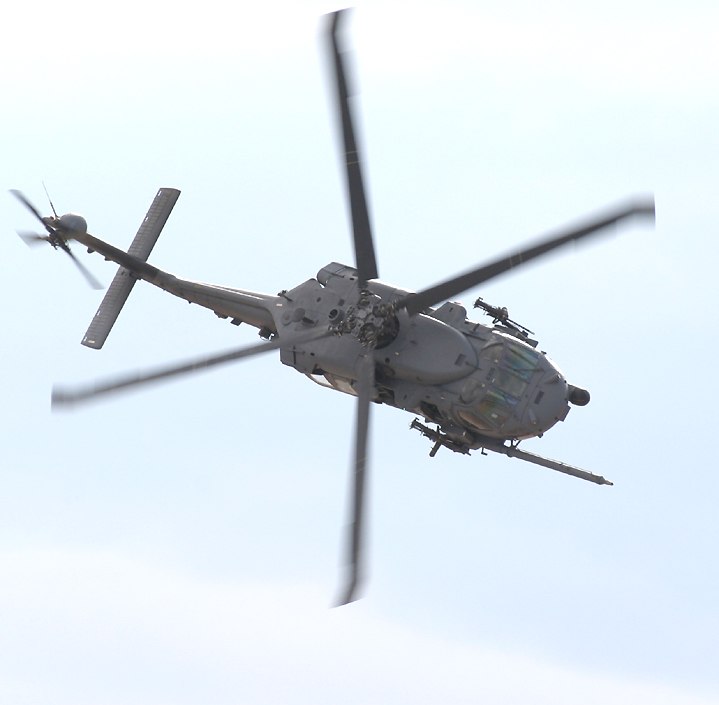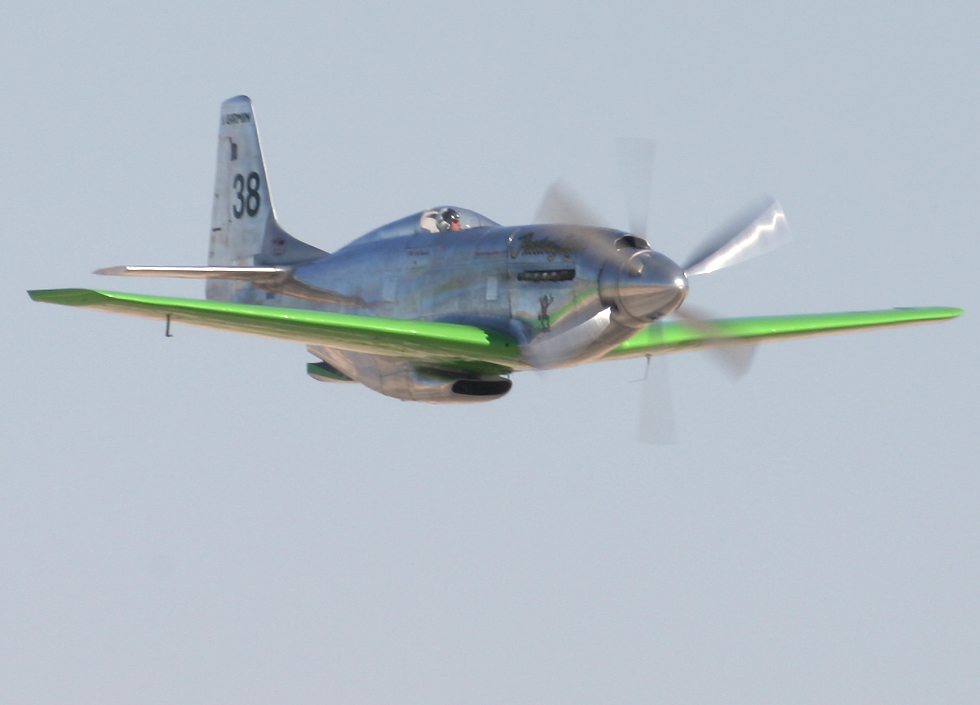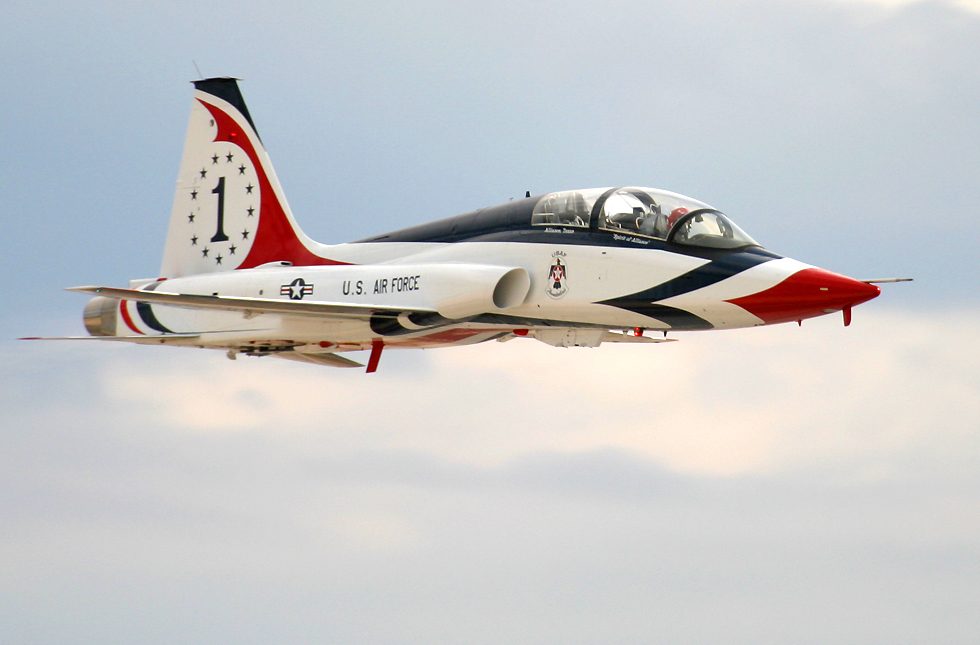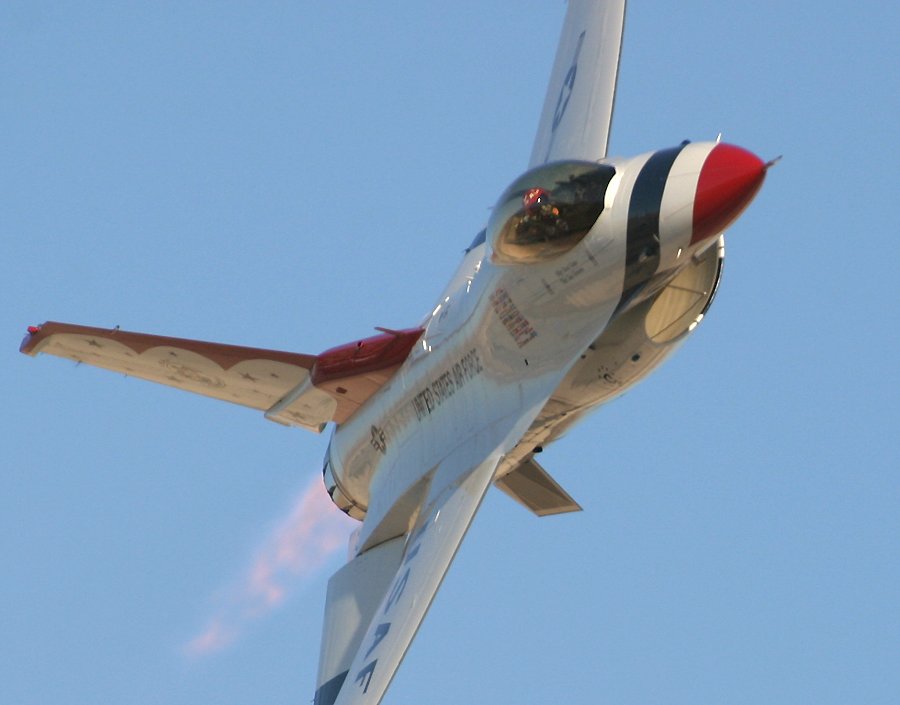Highlights of the 2004 Nellis AFB "Aviation Nation" Airshow
|
In five years' time I'm sure we'll probably be sick of the sight of them, but at the moment the Raptor is a terrific novelty. It was great seeing them in action, but the flybys were a very ordinary affair, almost entirely consisting of high flat passes, with only one banking turn while they were in the airshow area, which was away from the crowd and at a great distance from the flightline. Fortunately, however, on the media day before the show I was at the Threat Training Facility in another part of the base, and managed to get this shot while standing on top of a Russian tank! Although it's backlit and a soft, it'll have to do until I get something better! [note: at the 2007 Point Mugu Airshow I did better] |
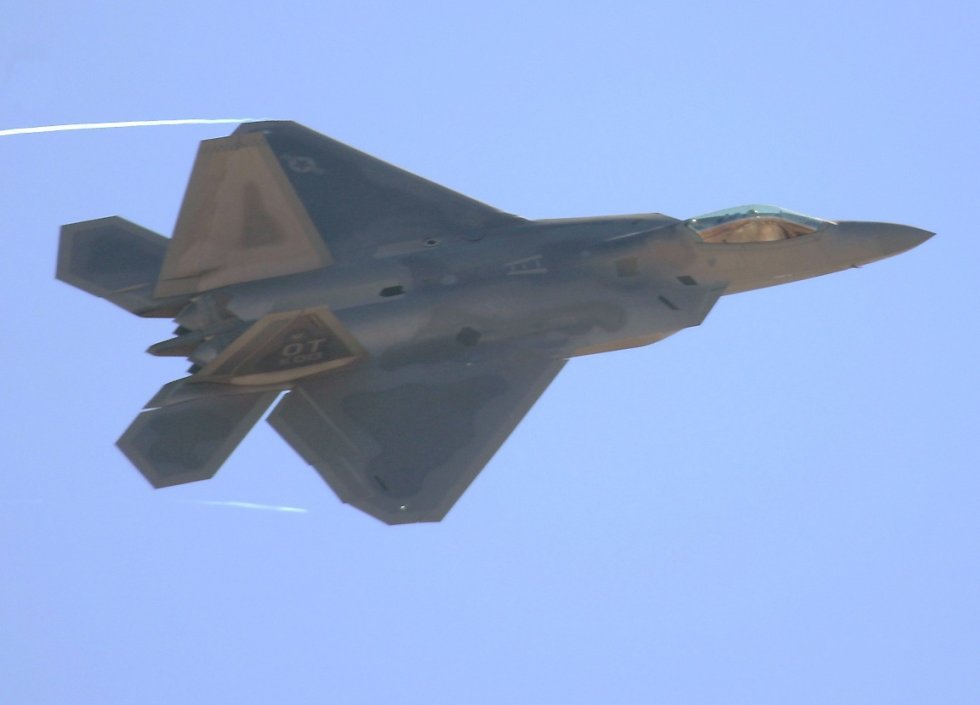
|
|
This F-14 Tomcat is the navy equivalent of the Eagle. Although both started life as pure fighters, economic realities forced both the F-14 and the F-15 to take on a bomb dropping role in addition to their previous duties, resulting in the so-called "Bombcat" with bomb racks which you see here and the F-15 Strike Eagle. Interestingly enough, the replacements for both planes are markedly inferior in speed - the F-15 can fly at mach 2.5 while the F-22 (depending on who you believe) can only do around mach 2; in the same way, the F-14 has a top speed of mach 2.35 and its successor the F-18 Super Hornet can only do mach 1.7. The Raptor, however, is much more stealthy than the F-14, F-15 or F-18 and is also the only aircraft in any country's inventory which can fly at supersonic speeds without using afterburner, the so-called "super cruise" ability first demonstrated many years ago by the English Electric Lightning. This Tomcat display was really something special, not just because the pilot threw the plane around in spectacular fashion, but because it was the last official public display of this aircraft type before it's retired from service. Only seven squadrons still fly the Tomcats and the one that does displays is due to be disbanded soon; the remainder will all have transitioned to the F-18 before the end of 2006. However, I have trouble believing that the navy would allow its last demonstration to be at an air force show, so I wouldn't be too surprised if there were just a few more curtain calls before the lights finally go out. If this is the last show, then at least the mountains behind Nellis made it an especially interesting end for a fascinating aircraft! |
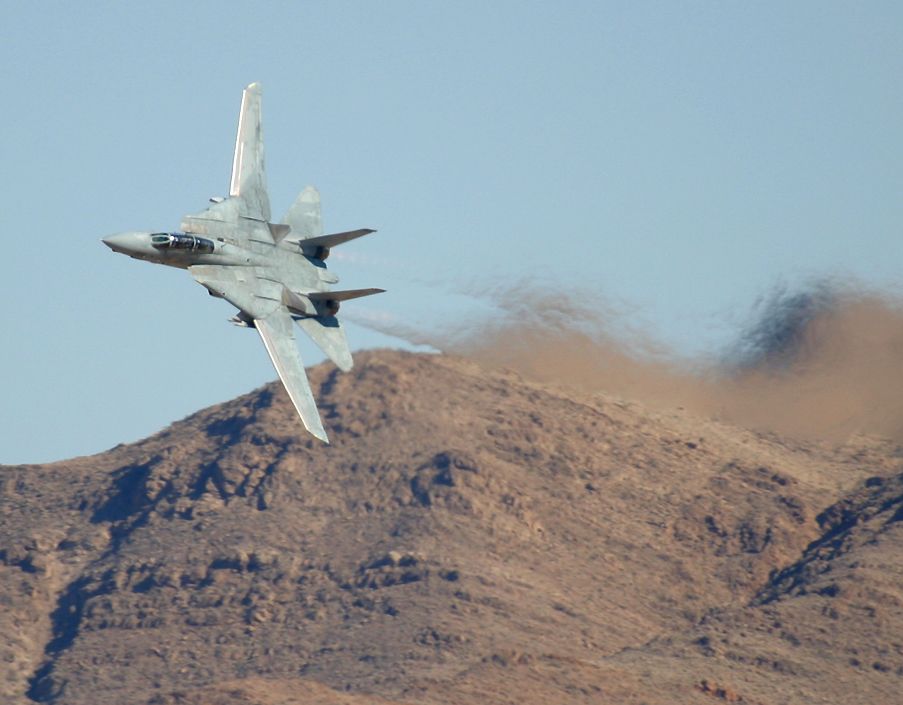 |
|
And here's the last (ahem) "fighter" to put on a performance at the show. Although the F-117 Nighthawk "stealth fighter" has a fighter designation and its pilots belong to a fighter squadron, this aircraft is really a strike plane or tactical bomber. It's theoretically capable of carrying sidewinder air-to-air missiles, but one of the pilots at the show told me that they don't even train for the fighter mission. This was only the second time I've seen the Nighthawk take off, do a demonstration and land at the same airshow, so it was pretty interesting even though the pilot carried on the usual tradition of not banking towards the audience. If you want to see a complete display similar to the one at Nellis, check out the F-117 demonstration at RIAT 2002. |
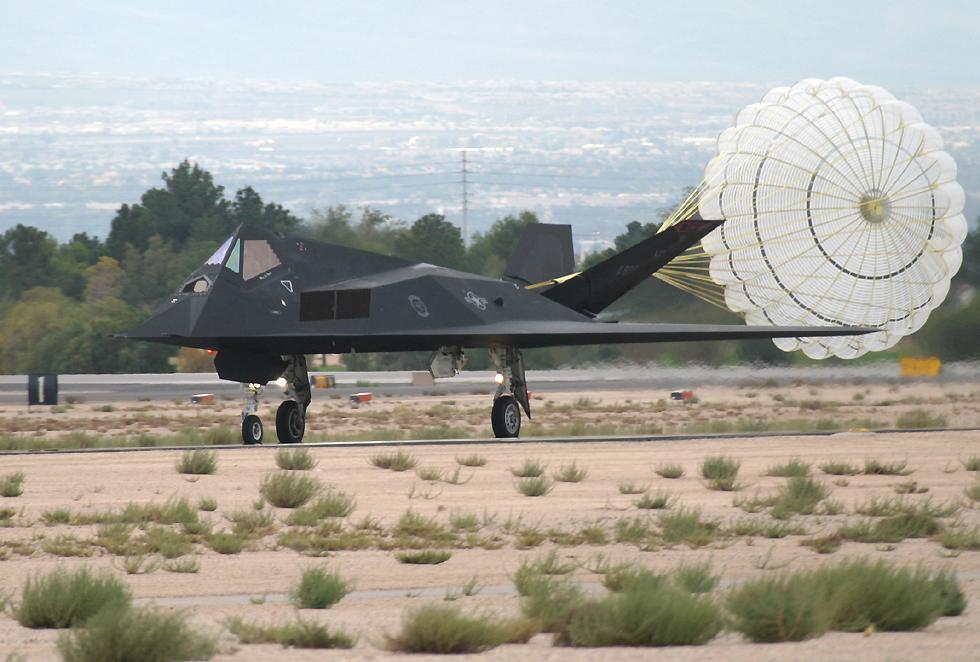 |
|
OK, back to reality now - here's a real fighter! The schedule promised a dogfight between a British Supermarine Spitfire and a German Messerschmitt Bf109, which would have been reason enough to make the five hour one-way drive to Las Vegas, even without the Raptor and the Tomcat! As it happens the Spitfire didn't appear, presumably because of mechanical problems, and the Messerschmitt turned out to be a Spanish HA-1112-M Hispano Buchon. The Buchon is a modified version of the Bf109 built after the war and ironically enough was manufactured with the same Merlin engine which powered many Spitfires! And if you think it's ironic that the Bf109 ended up with a Rolls Royce engine, then it's doubly ironic that it started life with one - when it was first developed in the 1930s it was fitted with a Rolls Royce Kestrel engine! Spain got a manufacturing licence for the Bf109 in 1942 and built them with Spanish or (after 1951) French engines, but it wasn't until 1954 that the first Merlin powered Buchon was flown, and these remained in service until 1967. If you want to see the differences between the Buchon and the German aircraft, check out this Bf109 with original Daimler engine which flew in New Zealand some years ago during the Warbirds over Wanaka event. As you'll see, the original lacks the large curved oil cooler under the nose (which in my opinion ruins the lines of the aircraft), and the exhausts are much lower. Still, since this is an authentic aircraft and even these are very rare, it was great to see it flying. The pilot certainly did a good display, throwing it around only slightly less aggressively than the Eagle and the Tomcat. |
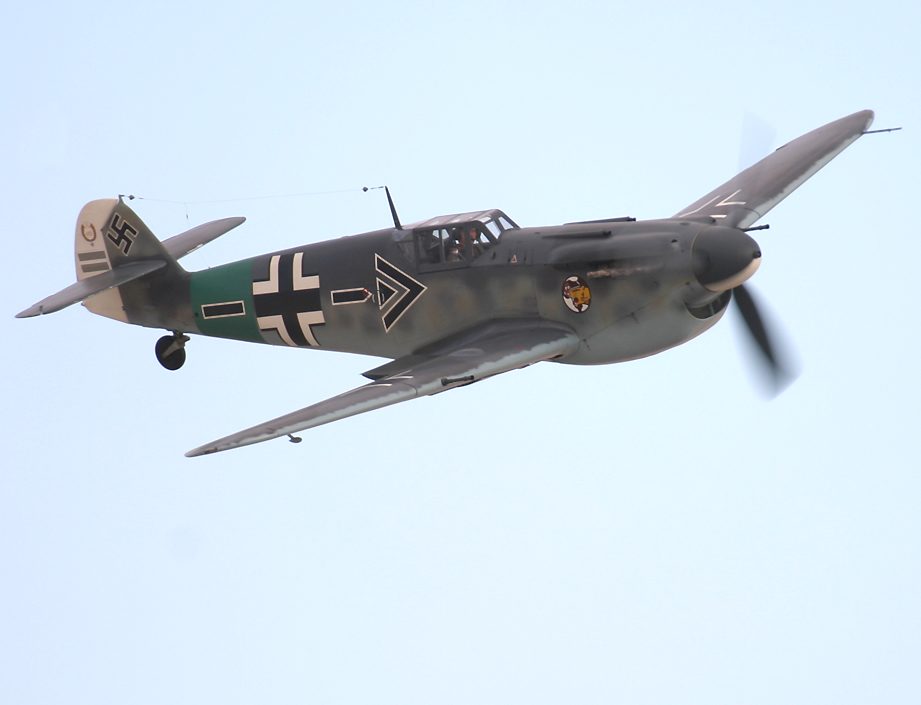 |
|
It really seemed as if the Buchon pilot upped the ante and made the two P-51D Mustangs performers put on a better than usual display, something more in line with the type of P-51 display seen at airshows in the UK. Although "Six Shooter" flew equally nicely, I've posted this shot of "Val-Halla" because its red painted surfaces contrast so nicely with Sunday's clear blue skies. |
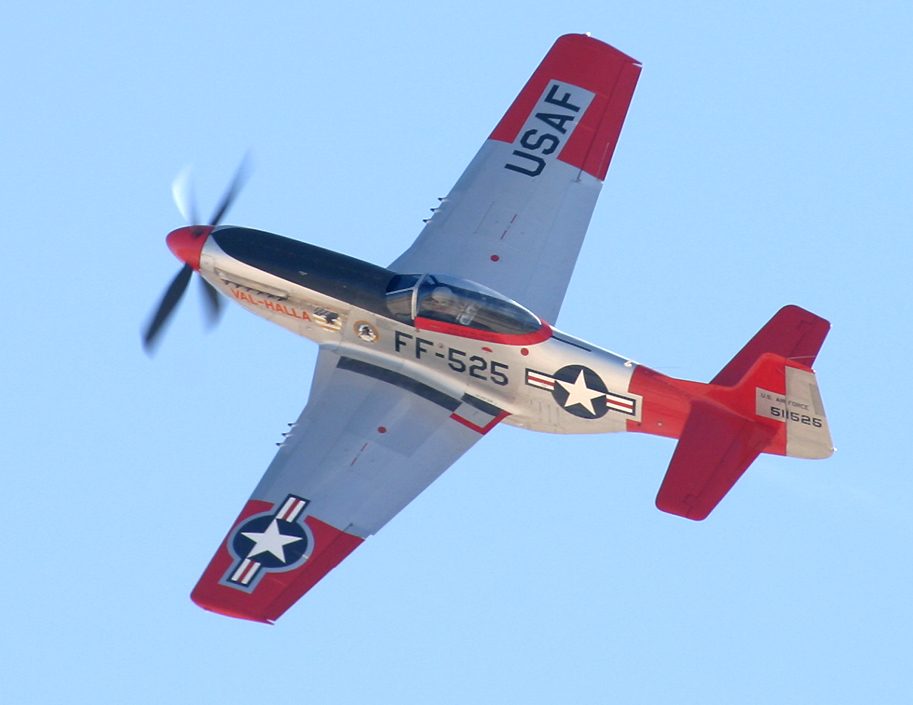 |
|
Before the warbirds show the air force put on one of their Heritage Flights, with the two P-51s and the F-15 Eagle and A-10 Thunderbolt II which had just completed their own solo performances. |
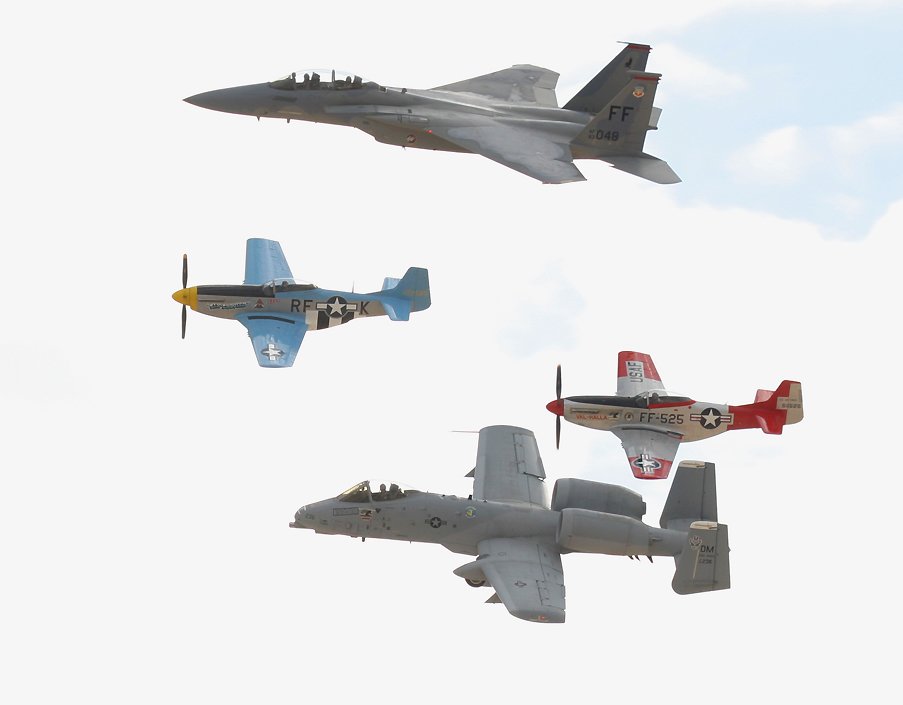
|
